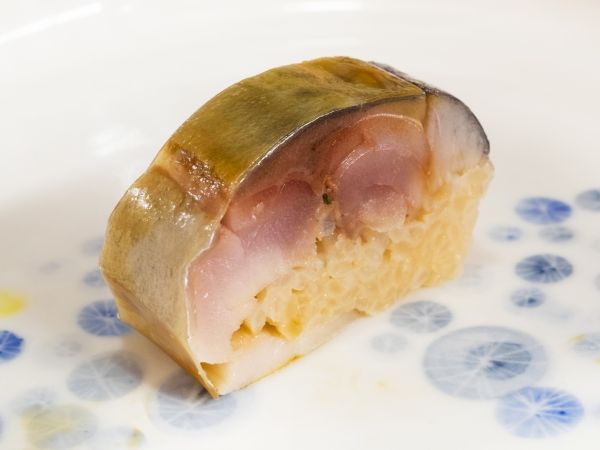Both sabazushi and battera are types of oshizushi made with mackerel. Oshizushi is made by layering vinegared rice with vinegared mackerel and shiro-ita konbu, then pressing the mixture into a wooden mold. Mackerel has been abundant in Japan since ancient times, which led to the development of this dish as a practical preserved food.
There are clear differences between Sabazushi and Battera, so let us explain them.

Sabazushi is said to have originated in the Edo period. Mackerel is salted and transported from its place of origin in Wakasa to Kyoto, where it arrives after 2 to 3 days, by which time the seasoning is just right. This salted mackerel is used to make Sabazushi. Even today, with the development of refrigeration technology, it remains popular with many people and is also a local dish of Kyoto. There are also long-established sushi restaurants that have been in business for generations. Additionally, Sabazushi can be found in other regions such as Hyogo, Hiroshima, and Wakayama, which have adopted the dish from Kyoto.
Sabazushi is prepared using a unique method. First, the air is removed from the vinegared rice to extend its shelf life. Then, the vinegar-marinated mackerel is formed into sticks with a cloth or bamboo mat. Finally, shiroita konbu or rausu konbu is placed on top to prevent the mackerel from drying out. Only half of the mackerel is used so that the thickness of the flesh is evident. The cross-section is rounded, which is why it is also called bozushi (bo means “stick”).

Next, Battera is a type of Oshizushi made by placing thinly sliced mackerel marinated in vinegar and shiroita konbu simmered in sweet vinegar on top of vinegared rice. It is typically shaped using a square mold. The mackerel is cut with a knife to minimize waste, resulting in an almost uniform thickness.
Battera is said to have been invented in 1894 by Tsunekichi Naka, the founder of Sushi Tsune, a sushi restaurant in Osaka. At the time, Sushi Tsune was selling Oshizushi made with Konishiro (Gizzard Shad), which was commonly caught in Osaka Bay. Due to its popularity, the traditional method using a cloth became insufficient for production, so a wooden, boat-shaped mold was used instead.
Customers reportedly referred to the mold as “bateira,” a Portuguese word meaning “boat,” which evolved into “battella.” Over time, this name further transformed into “Battera.” As the price of Konishiro (Gizzard Shad) rose, mackerel was adopted as an alternative, and due to its ease of shaping, square molds became the standard.
In summary,
Sabazushi: Use a bamboo mat to shape the fish into a round form, using thick slices of mackerel left whole. The cross-section has a rounded shape.
Battera: Shaped into a square using a wooden mold, thinly sliced mackerel is arranged evenly. The cross-section is square.
Sabazushi is a traditional regional sushi centered around Kyoto, while Battera is a type of sushi that became popular among the general public in Osaka.
Related contents
The image of the boat-shaped wooden mold used when making battera